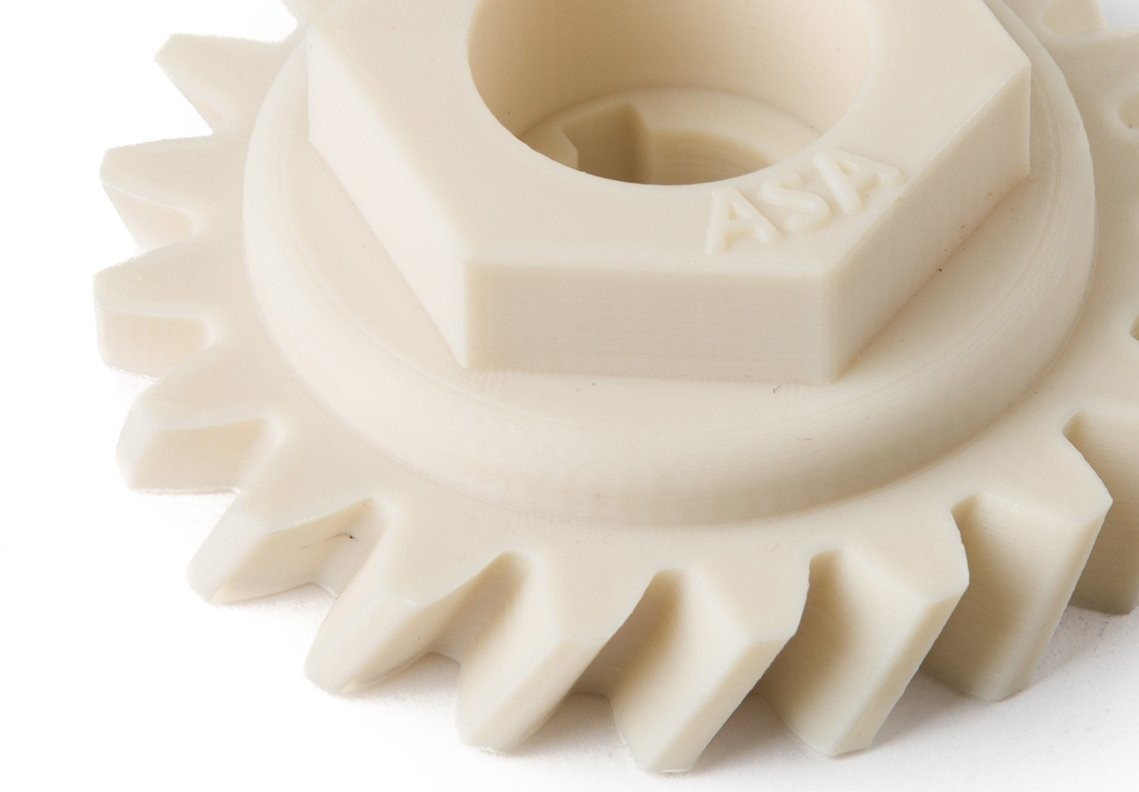Sunlight brings a lot of positive effects. When the sun shines on your face, you will feel warm or hot, which is good. But for plastics, it may not be a good thing because the UV will cause plastics to degrade. If you are looking for a type of material that can resist UV, this post will be helpful.
PLA(Polylactic acid)
PLA is a biodegradable plastic made from renewable resources such as sugar cane or corn starch.
You may hear that it is a biodegradable plastic and think that its resistance to UV is also feeble, but in fact, it is not the case, its ability to resist UV is very good.
As for why many people don't recommend using it for outdoor scenes, it's for another reason: temperature.
When summer comes, the temperature outside will be as high as 50 ° C ~ 60 ° C in some areas at noon. The heat deformation temperature of PLA is generally 50 ~ 55 ° C, and the print is placed in this environment for a long time: This is not a good idea.
So that's the real reason why so many people don't recommend that you use it for outdoor scenes.
Almost forgot: in summer, the temperature inside the car can be as high as 60 °C+. So putting a PLA print into the car is very likely to get a deformed PLA print.

Photo Credits: RepRap Ltd
ABS (Acrylonitrile butadiene styrene)
Compared to PLA, ABS plastics have many advantages for outdoor use. The main reason is that it is a non-biodegradable plastic compared to PLA.
ABS can withstand the sunlight for longer because it is more resistant to high temperatures than PLA. Due to its rigidity and good tensile strength, it is a good choice for short-term outdoor use.
Prolonged exposure to sunlight can have a degenerative effect on it. The purest ABS does not absorb the energy of ultraviolet radiation to produce free radicals.
Prolonged exposure to ultraviolet light and sunlight accelerates the weathering of ABS. In addition, prolonged exposure to ABS to sunlight can cause the model to warp due to temperature changes.
Degradation of this material can be observed similar to the symptoms of PLA at the time of degradation. Long-exposure ABS loses color and becomes pale. A white chalky substance appears on its surface, often precipitated by mechanical force.
The plastic slowly begins to lose its rigidity and strength and begins to become brittle. Still, ABS can be used outdoors for a longer period of time than PLA. AbS has much better structural integrity but is known to fade faster.
A common way to provide UV protection for outdoor 3D printing materials is to apply some paint on the outside. You can easily get a UV protection varnish to solve this problem.

PETG(Ethylene terephthalateco-1,4-cylclohexylenedimethylene terephthalate)
Of all three commonly used 3D printing materials, PETG is the most durable material for prolonged exposure to ultraviolet radiation. PETG is a modified version of ethylene glycol from common PET (polyethylene terephthalate).
The lack of additives and colored pigments in natural PETG means it is easier to get a pure form of UV resistance on the market.
As discussed in the section above, any purer form of plastic is less affected by UV rays.
Compared to ABS plastic, it is a less rigid and more flexible material. The flexibility of the material allows it to expand and contract according to temperature conditions when exposed to the outdoors for long periods of time.
PETG's smooth surface helps to reflect most of the radiation that falls on the surface, and its transparent appearance does not retain any thermal energy from radiation.
These properties make it more resistant to UV rays than PLA and ABS. Even if it is more durable under ultraviolet rays and sunlight; Because of its soft surface, it is more likely to wear out when used outdoors.

ASA (Styrene acrylonitrile acrylate)
It's the best of both worlds. It is strong and durable under ultraviolet radiation.
It is the most famous 3D printable plastic used in inclement weather. ASA was actually developed as an alternative to ABS plastics. Although it is a difficult and expensive material to print, it has many advantages.
In addition to its UV resistance, it is abrasion resistant, mild, and highly impacts resistant.
Because of these properties, some common applications for ASA plastics are outdoor electronic enclosures, vehicle exterior components, and outdoor signage.
This filament has obvious UV and weather resistance, so for any project you use outdoors, this is your preferred filament.
It can be said that in addition to the higher price than PLA/PETG/ABS, the advantages are also obvious, after all, you get what you pay for.

What materials should be used for car & bicycle & motorcycle parts?
If you're printing or prototyping materials for the interior of your car, it's best to stick with a good old ABS because it's cheap and not prone to weathering.
When you use 3D printing materials to make small external parts for cars & bikes & motorcycles, the best bet is to stick with the ASA mentioned above for greater durability in UV rays and sunlight.

If you have a lightweight and sturdy prototype idea for a car, bike, and motorcycle, then the best option is to use a composite material with continuous carbon fiber.
Carbon fiber is used in the aerodynamic components and body of most high-performance vehicles. It has even been used by companies such as McLaren and Alfa Romeo to build extremely light and sturdy chassis for supercars.
If you would like to know about continuous carbon fiber, please leave a message to let us know and we will exhaust our ability to tell you about continuous carbon fiber composites.